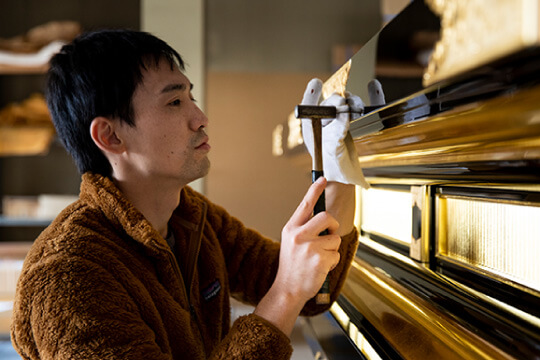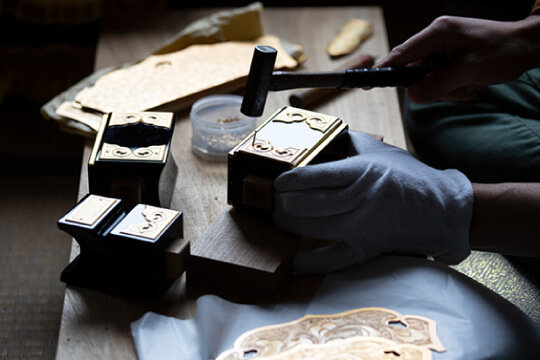CRAFTSMANSHIP
Akazawa Choyo’s production of Buddhist altars is sustained by carefully selected craftsmen.
Buddhist altars for use in places of worship, produced at our Nagano factory, and household Buddhist altars, produced at affiliate factories in Shizuoka and Tokushima, are shipped throughout the country and around the world.
- CARPENTRY
- SAND CASTING
- FORGING
- URUSHI COATING
- GILDING
- INCENSE STICKS
- ASSEMBLY
-
A factory in Sayama City, Saitama Prefecture, performs the first stage in the production of a Buddhist altar: the processing of the wood. Akazawa Choyo’s Buddhist altars are made primarily with solid wood; their design showcases the beautiful curvature produced when the wood is planed. Altars are crafted with traditional processes that arise from sound skills and experience.
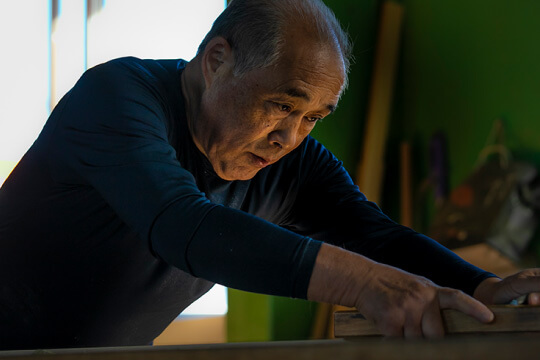
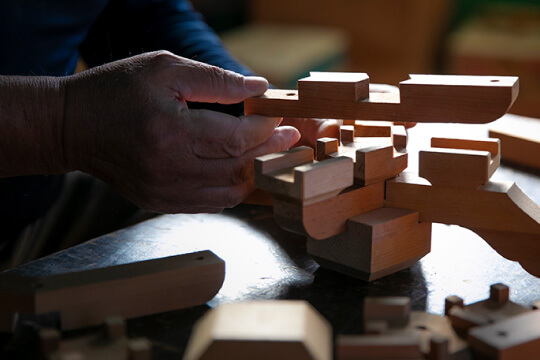
-
Gold fittings used for Buddhist altars, such as flower vases and candle stands, are cast using sand molds. Sand casting is a process in which an object is formed by pouring metal into a form constructed of sand. Once the metal hardens, the object is removed from the sand mold and its surface is ground and polished to a smooth curve.
Molten metal reaches a temperature of 1000°C before it is poured into a sand mold, and this causes the air inside the factory to become as hot as a midsummer day.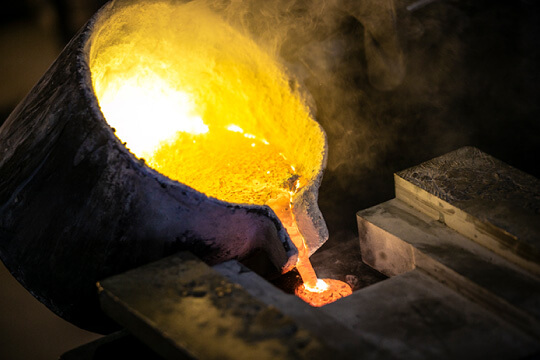
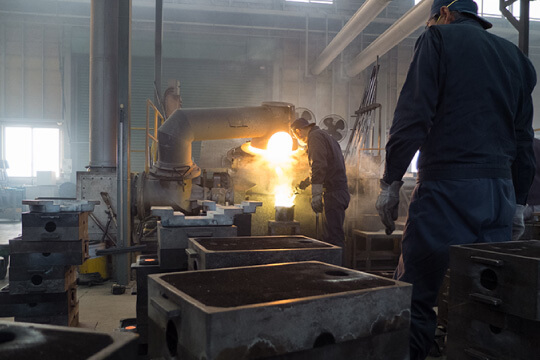
-
The forging of bells and similar objects is performed by craftsmen in Takaoka City of Toyama Prefecture.
The first step to make a bell is to shape a flat board of metal in a round way to make the base. Then, a cylindrical roll of bronze is weld to the base and hammered down to form the sides. This is a delicate process because the overall tone of the bell depends on the strength of the hammering. To complete the bell, a "rib" (roll-shaped edge) is attached and the whole bell is heated.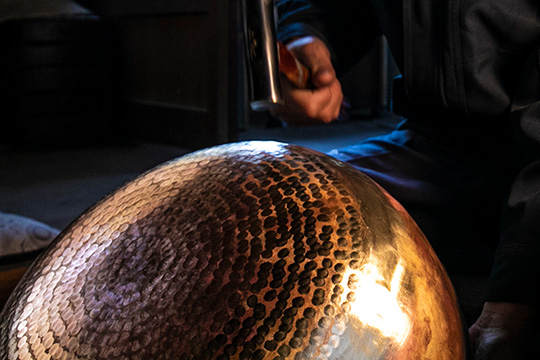
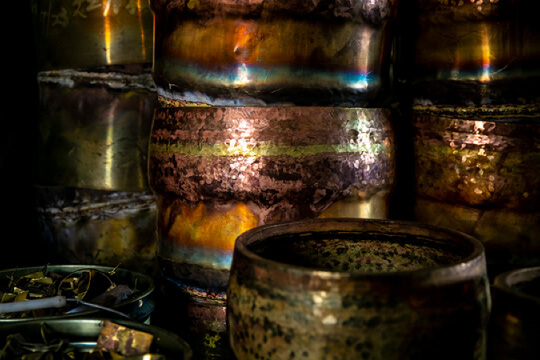
-
The urushi coating is done by craftsmen from the Kiso region of Shiojiri,Nagano, who are famous for making "Kiso urushi".
Urushi coating is done with a specialized brush. After the urushi has been applied, craftsmen place the product in a large wooden shelf called a Muro, where it dries in a moist space, to prevent streaks from the brush showing up. Maintaining the proper humidity and room temperature is very important in drying urushi. Wrong adjustments may result with a patchy coloring.
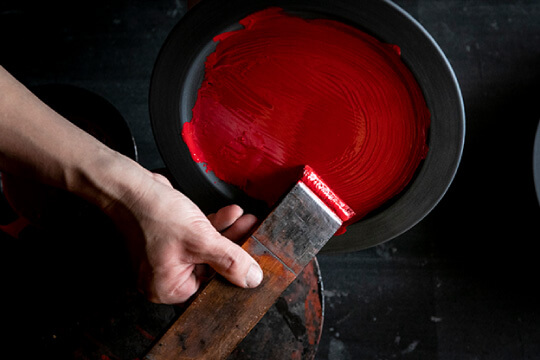
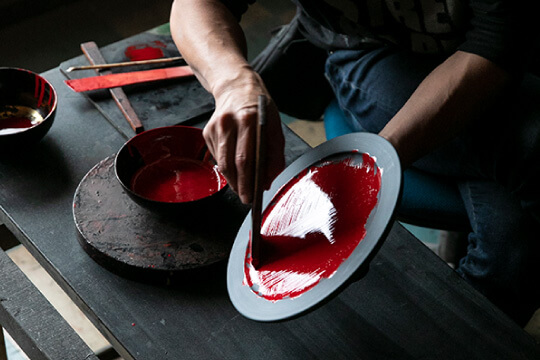
-
The gold leaf used is just 1/10,000th of a millimeter thick. This gold, which is pounded as thin as possible, is applied with care one sheet at a time. Gold leaf is applied not only to flat surfaces like boards but also cut into millimeter-scale pieces and applied to the curved, uneven, and carved surfaces of the components of Buddhist altars.
Most of the gold leaf applied to Akazawa Choyo Buddhist altars has a special coating applied to it to prevent deterioration or damage to the gold leaf. We have devised methods to preserve its beauty for many years to come.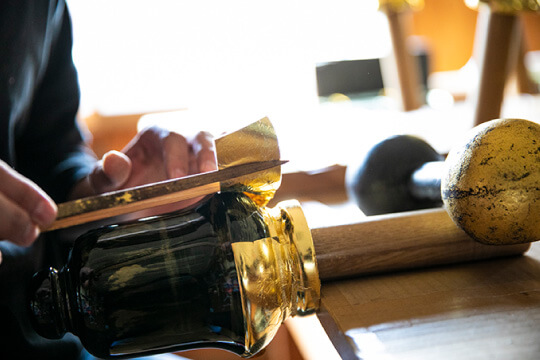
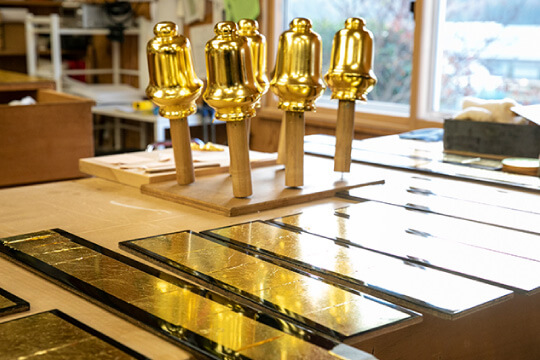
-
Akazawa Choyo’s incense sticks are produced in the region most known for their incense: Hyogo.Incense sticks are made by molding cedar leaves and aromas, and then pushing them through a device that gives them a pasta like shape. The pasta-shaped incense sticks are dried, and then cut to perfect length, which completes the process.
It is incredibly difficult to cut the sticks straight, and it is necessary to be in tune with the condition of the machine, and how dry they are.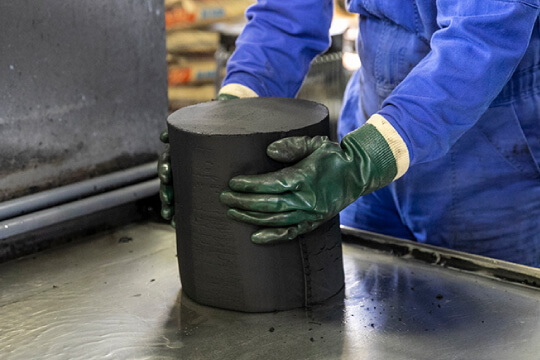
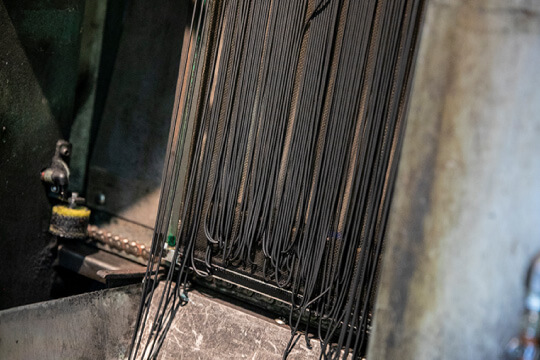
-
All altar and fitting materials are sent to our assembly factory in Takaoka, Toyama. It is the place where we assemble, adjust every detail and send the finished product to the customer. We also sent the materials, and then assemble them on site in the case that we are shipping overseas. Takaoka, where bronze, metal, and urushi businesses are prosperous, is one of the few places in Japan known for the production of altars and fittings.
